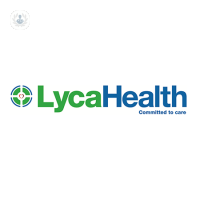Pre-eclampsia
Miss Luxmi Velauthar - Obstetrics & gynaecology
Created on: 03-14-2017
Updated on: 04-09-2024
Edited by: Kate Forristal
What is pre-eclampsia?
Pre-eclampsia is a condition that causes high blood pressure (hypertension) and high levels of protein in the urine (proteinuria) in some pregnant women, usually from the 20th week of their pregnancy or after the baby has been born, a condition known as postpartum pre-eclampsia.

What are the symptoms of pre-eclampsia?
Normally, a pregnant woman with pre-eclampsia may not initially feel ill, but will show signs such as:
- arterial hypertension
- protein in the urine
- sudden weight gain
- swelling of the face or eyes and hands
If the pre-eclampsia is severe, the following symptoms may be present:
- headaches that do not go away
- abdominal pain on the right side, below the ribs
- breathing difficulties
- nausea and vomiting
- urinating infrequently
- temporary loss of vision, points or flashing lights, blurred vision or sensitivity to light
- shortness of breath
These signs should be picked up during a routine antenatal appointment.
Although pre-eclampsia is usually mild, in a small number of cases, pre-eclampsia can lead to severe complications for mother and baby if it is not managed and treated properly. Early diagnosis is crucial. Generally, pre-eclampsia will be more severe the earlier the condition develops.
Pre-eclampsia may lead to rare, but severe complications, without immediate treatment:
- Eclampsia: the onset of convulsions during pregnancy or in the postpartum period that can happen even without any previous signs of severe pre-eclampsia. Untreated, eclampsia seizures can lead to brain damage, coma and even death. Not all pregnant women with pre-eclampsia will go on to develop eclampsia.
- HELLP (hemolysis, elevated liver enzymes and low platelet count) syndrome: a severe form of pre-eclampsia, HELLP syndrome is a combined blood clotting and liver disorder that causes bleeding in the mother's liver, damages red blood cells, lowers platelet count and causes chest and abdominal pain. It can develop suddenly without any symptoms and is life-threatening for mother and baby.
- Stroke: pre-eclampsia may cause damage to the liver, kidneys, lungs, heart, eyes and brain, leading to a stroke or another brain injury.
- Placental abruption: pre-eclampsia increases the risk of placental abruption, a condition in which the placenta separates from the inner wall of the uterus before delivery. Heavy bleeding caused by severe placental abruption can be life-threatening for mother and baby.
- Preterm birth: pre-eclampsia may result in an unplanned premature birth, which is delivery before 40 weeks.
Slow growth is the main sign of pre-eclampsia in the unborn baby. Caused by a reduced blood supply through the placenta, the unborn baby receives fewer oxygen and nutrients than it should, affecting its growth and developments. This condition, called foetal or intra-uterine growth restriction, will also usually be picked up during antenatal appointments.
Most cases of postpartum pre-eclampsia will develop within the 48 hours of childbirth, but in some instances, it will develop later after childbirth, up to six weeks later. This is called late postpartum pre-eclampsia. Signs of postpartum pre-eclampsia are usually similar to symptoms of pre-eclampsia during pregnancy.
What are the causes of pre-eclampsia?
The exact cause of pre-eclampsia is not known but studies suggest that it begins in the placenta after it was not developed properly during the first half of the pregnancy, due to an issue with the blood vessels.
Problems with the placenta may disrupt blood flow between mother and baby. This could lead to irregular blood pressure and irregular blood flow to the kidneys.
A higher risk of pre-eclampsia may also be related to the following factors:
- vascular problems
- autoimmune disorders such as lupus
- obesity
- a family history of preeclampsia
- a history of diabetes, high blood pressure or kidney disease
- being pregnant for the first time or having a multiple pregnancy
- being over the age of 35
- more than 10 years having passed since your last pregnancy
- gestational diabetes
- thrombophilia
- pre-eclampsia in a previous pregnancy
How does pre-eclampsia affect health?
Pre-eclampsia raises blood pressure, increasing your risk of stroke, blood clotting issues, seizures and pulmonary oedema. Through the release of protein in the urine, the healthy function of the kidneys and liver can be affected. Problems with the blood flow to the placenta can also lead to the birth of small, premature babies. Severe complications from pre-eclampsia can cause the death of mother and foetus, although this only occurs in extreme cases. Most women with pre-eclampsia will give birth to healthy babies and fully recover from the condition.
Can pre-eclampsia be prevented?
There are no proven strategies for preventing pre-elampsia. However, it is thought that taking aspirin in low doses, calcium supplements and products with vitamins E and C helps to reduce your risk. If you suspect you might have pre-eclampsia you should see your doctor to ensure you are monitored properly, are taking safe medications/vitamins/supplements and that any complications such as eclampsia are managed, if they occur.
How is pre-eclampsia diagnosed?
A diagnosis of pre-eclampsia is made on your blood pressure levels and the presence of at least one other symptom after the 20th week of pregnancy. You may be referred for tests such as blood tests, urine tests and a foetal ultrasound to gather the necessary information.
What is the treatment for pre-eclampsia?
The only current “cure” for pre-eclampsia is delivery, through an induced pregnancy or a vaginal delivery. If there are complications during labour, you might need a caesarean birth. This will usually happen in the 37 to 38 week of pregnancy, but with more severe cases, it can be earlier.
In order to avoid a delivery too early, your doctor will consult with you about how the condition can be managed temporarily.
In the case of mild pre-eclampsia, you may only need medication to lower your blood pressure. Your obstetrician will regularly analyse your blood pressure, weight and urine levels at each prenatal visit, which may be once or twice a week.
In more severe cases, corticosteroids may be offered to improve your liver and platelet function, as well as anticonvulsant medication to prevent seizure.
In the most severe cases, you may need to stay in hospital to receive regular monitoring of your own health and the health of your baby.
What is the risk of recurrent pre-eclampsia?
If your pregnancy was normal, there is a very low risk of having pre-eclampsia in the next pregnancy. However, the likelihood of pre-eclampsia will increase if you have risk factors such as obesity, family history of high blood pressure or being over 35 years old.
If you had pre-eclampsia during your pregnancy, there is a high risk of developing pre-eclampsia again in the next pregnancy. While recurrent pre-eclampsia is usually less severe, this is not certain. Your doctor will carefully monitor you and your baby. The high risk of recurrent pre-eclampsia will increase if you have developed diabetes or chronic hypertension since your previous pregnancy, if you have in vitro fertilisation, twins or a multiple pregnancy.
If you didn't have pre-eclampsia during your second pregancy, there is still a risk of developing the condition during a subsequent pregnancy.
What is the long-term health impact of pre-eclampsia?
Women who have had pre-eclampsia are three to four times more at risk of developing high blood pressure and twice more likely to have a stroke or heart disease. They are also at an increased risk of developing diabetes and kidney disease. The risk of heart disease is even higher for women who had (severe) pre-eclampsia and gave birth to premature, low-weight babies


